Starting with coin-op machines, Sega was a growing company in a new industry. They were the first in many endeavors and although hit several times by the economy, competitors, and even their own mistakes, Sega has always managed to reconstruct themselves to come out on top. Continuing to learn, this hardware developer soon became a software only company, re-establishing their place in the game world and continuing to dash full speed ahead.
The Beginning of Sega
The year was 1940 when a small company called “Standard Games” was born in Honolulu. A founder, Martin Bromley, decided to venture out to Tokyo, Japan and changed the company name to “Service Games of Japan”. This name was officially registered in 1952, taking on the shortened alias “SEGA”. Sega started its business by providing coin-op machines to U.S militants stationed in Japan. Two years after, Sega merged with another coin-op company, headed by a man named David Rosen. The merger with Rosen Enterprises gave birth to the popular submarine simulator called “Periscope”, which became a worldwide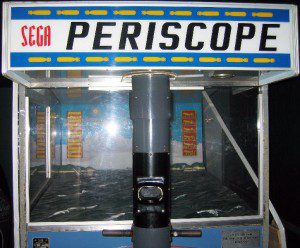 success. Rosen then sold Sega to Gulf & Western Industries, producing $214 million in revenue by building on Sega’s marketing strategies. The year 1983 became a very crucial year for profits in Japan. Programmer Yu Suzuki becomes founder and leader of “SEGA AM2” to create new arcade titles. His first game is a 2D boxing game named “Championship Boxing” which is ported to the Sega’s first video game console, the “SG-1000”. Sega also releases one the first laser disc arcade games called “Sega Astron Belt” (Quarter Horse by Electro Sport were released slightly earlier) and the first 3D game called “SubRoc- 3D”. However, all good things must come to an end and just as profits were coming in rapidly, they were about to follow suit in depletion.
success. Rosen then sold Sega to Gulf & Western Industries, producing $214 million in revenue by building on Sega’s marketing strategies. The year 1983 became a very crucial year for profits in Japan. Programmer Yu Suzuki becomes founder and leader of “SEGA AM2” to create new arcade titles. His first game is a 2D boxing game named “Championship Boxing” which is ported to the Sega’s first video game console, the “SG-1000”. Sega also releases one the first laser disc arcade games called “Sega Astron Belt” (Quarter Horse by Electro Sport were released slightly earlier) and the first 3D game called “SubRoc- 3D”. However, all good things must come to an end and just as profits were coming in rapidly, they were about to follow suit in depletion.
The Crash
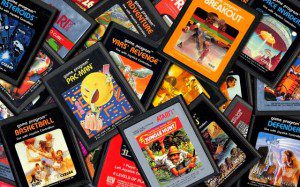 The North American video game crash of 1983 is a tragic period that almost every gamer is familiar with. Lasting almost 2 years, a plethora of home console providing companies went bankrupt. The personal computer had advanced drastically by 1982 and now offered better graphic capability, more memory and clearer sound than video game consoles. High prices had also dropped and computers now feature the ability to “save” a game on writable memory storage. Computers and an over saturated gaming market, lead to poor sales all over the continent.
The North American video game crash of 1983 is a tragic period that almost every gamer is familiar with. Lasting almost 2 years, a plethora of home console providing companies went bankrupt. The personal computer had advanced drastically by 1982 and now offered better graphic capability, more memory and clearer sound than video game consoles. High prices had also dropped and computers now feature the ability to “save” a game on writable memory storage. Computers and an over saturated gaming market, lead to poor sales all over the continent.
With the industry losing profit, Gulf & Western quickly sold U.S assets but, Rosen had luckily acquired a distribution company in Japan. He soon convinces its founder, Hayao Nakayama, to buy Sega’s Japan assets for $38 million. It was in this crisis that Sega decided to no longer depend on one new item but, always plan ahead. A year later, Sega is bought by a partnership with Japanese company CSK, renaming itself to “SEGA Enterprises ltd”.
Reclaiming the American Market
By 1986, Sega witnessed the success of Nintendo’s NES console and decided to revisit the US market with the “Sega Master System”. 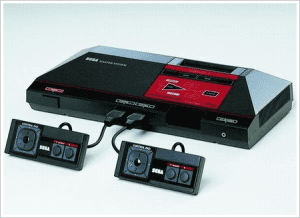 It was also during this time when Sega of America was created. The Master System was a redesign of an older Sega product called the “Mark III” that was made specifically for the US. Technically superior to the NES in every way, this console was short lived, due to Nintendo’s growing fan base. Alex Kidd, who became the unofficial mascot for Sega, was remade for the Master System but still could not help sales. By 1988, Nintendo had control of 88% of the videogame market with characters such as Mario and Donkey Kong leading Nintendo’s success. During that same year, Sega released the “Mega Drive” in Japan, Europe, Asia, Australia and Brazil. It was because of trademark issues, that the Mega Drive was renamed the “Sega Genesis”
It was also during this time when Sega of America was created. The Master System was a redesign of an older Sega product called the “Mark III” that was made specifically for the US. Technically superior to the NES in every way, this console was short lived, due to Nintendo’s growing fan base. Alex Kidd, who became the unofficial mascot for Sega, was remade for the Master System but still could not help sales. By 1988, Nintendo had control of 88% of the videogame market with characters such as Mario and Donkey Kong leading Nintendo’s success. During that same year, Sega released the “Mega Drive” in Japan, Europe, Asia, Australia and Brazil. It was because of trademark issues, that the Mega Drive was renamed the “Sega Genesis” 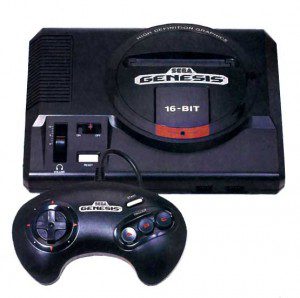 in North America and therefore, was released in the US a year later.
in North America and therefore, was released in the US a year later.
Now in 1990, with the new 16 bit Sega Genesis as well as a new ad campaign by Sega of America, Sega was drawing closer to a slightly older audience. Around this time, the company was looking for a new mascot to rival Mario. After going through several concepts, 3 employees of Japan’s “Sega AM8” department had finally touched on something special. A hedgehog was drawn by Naoto Oshima, designed by Hirokazu Yasuhara, and finally programmed by Yuji Naka. Colored blue to match the Sega logo, the character was named Sonic the Hedgehog. 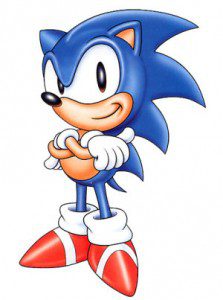 Known as the “blue dude with ‘tude”, Sonic quickly becomes a well received, in- your-face character and Sega becomes one of the top brands of American youth. The “Game Gear” is released afterwards to be a handheld version of the Genesis. In comparison with Nintendo’s “Game Boy”, the buttons were on the opposite sides of the screen, allowing for easier gaming. Complete with a more colorful screen and stereo sound, the Game Gear was the most successful Nintendo handheld competitor. For a little while during this time, Sega held 65% of the North American market.
Known as the “blue dude with ‘tude”, Sonic quickly becomes a well received, in- your-face character and Sega becomes one of the top brands of American youth. The “Game Gear” is released afterwards to be a handheld version of the Genesis. In comparison with Nintendo’s “Game Boy”, the buttons were on the opposite sides of the screen, allowing for easier gaming. Complete with a more colorful screen and stereo sound, the Game Gear was the most successful Nintendo handheld competitor. For a little while during this time, Sega held 65% of the North American market.
While things were going well, piracy became an issue in Southeast Asia. As an answer, Sega created a protective mechanism to allow for trademark suits. This made it so that when a game cartridge is inserted, the console would say “Produced by or under license from Sega Enterprises ltd “. Soon after, another game developer called Accolade was taken to court for copyright infringement. Accolade produced games for the Genesis but, by using a piece of Sega code, the protective statement would appear on start up. This statement was not authorized by Sega to be used by anyone but them, causing the company to argue that it was trademark infringement. Accolade replied saying that it was Sega’s fault for claiming the rights to their games. Sega also claimed that because Accolade was making games for the Genesis, they were stealing private code. Sega lost the lawsuit because it was decided by the court that in order to make games for a console, reverse engineering was necessary.
 After the success of “Sonic the Hedgehog”, Sega AM8 changes its name to Sonic Team. The new team is responsible for Sonic the Hedgehog 2, 3 and many others, working under the strict guidelines of Yuji Naka. Around 1992, the Sega CD was also released in America for the Sega Genesis and allowed for CD games to be played from the same console.
After the success of “Sonic the Hedgehog”, Sega AM8 changes its name to Sonic Team. The new team is responsible for Sonic the Hedgehog 2, 3 and many others, working under the strict guidelines of Yuji Naka. Around 1992, the Sega CD was also released in America for the Sega Genesis and allowed for CD games to be played from the same console. 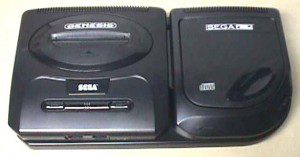 The Sega CD exclusive, Sonic CD, became popular for its new crisp graphics and time travel game play that allowed for different versions of each level. A year later, Naka leaves Sonic Team to work with Sega of America’s inner department Sega Technical Institute on Sonic 3 & Knuckles. Due to the game’s following success, Sonic Team is recognized in Sega Japan and Naka is offered to be the company’s producer. But while Sonic Team is leading Sega’s console sales, Sega’s AM2 development team is about to take the fighting genre by storm.
The Sega CD exclusive, Sonic CD, became popular for its new crisp graphics and time travel game play that allowed for different versions of each level. A year later, Naka leaves Sonic Team to work with Sega of America’s inner department Sega Technical Institute on Sonic 3 & Knuckles. Due to the game’s following success, Sonic Team is recognized in Sega Japan and Naka is offered to be the company’s producer. But while Sonic Team is leading Sega’s console sales, Sega’s AM2 development team is about to take the fighting genre by storm.
Gains and Losses
After his success with arcade titles such as “Hang-On”, “Space Harrier” and “Outrun”, Yu Suzuki pondered about making his games three dimensional. Shortly after Sonic Team’s “Sonic 3” release in 1993, “Virtua Fighter”, 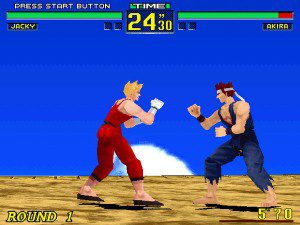 the world’s first 3D polygonal fighting game, is born. Hosted on the SEGA Model 1 arcade platform, Virtua Fighter becomes a heavyweight competitor for current fighting leaders, “Street Fighter II” and “Mortal Kombat”. Unlike its challengers, Virtua Fighter’s control scheme only used punch, kick and block buttons. There was also the use of real life fighting techniques by all 8 characters, which before then had never been seen in a video game.
the world’s first 3D polygonal fighting game, is born. Hosted on the SEGA Model 1 arcade platform, Virtua Fighter becomes a heavyweight competitor for current fighting leaders, “Street Fighter II” and “Mortal Kombat”. Unlike its challengers, Virtua Fighter’s control scheme only used punch, kick and block buttons. There was also the use of real life fighting techniques by all 8 characters, which before then had never been seen in a video game.
By 1994, Sega’s share of the home market fell to 35%. They released the “Sega 32x” as an attempt to upgrade the Genesis but, with hype for Sony’s “Playstation” and Sega’s own” Sega Saturn”, 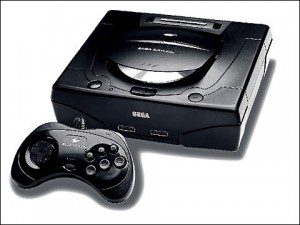 software shortages eventually led to its demise. The next year, Sega Saturn was surprisingly released as a 32 bit console. Sega released the Saturn 4 months before the Sony Playstation but, the plan backfired once consumers learned about the higher price point and fewer launch titles. The early release did not go over well with retailers, causing places like KB Toys to completely get rid of all Sega product to make room for its competitors. Although the Sega Saturn had a short life span due to marketing decisions and competing consoles, Nintendo 64 and Playstation, it was the choice for those looking for arcade imports. Virtua Fighter, DaytonaUSA, and Virtua Cop helped to boost sales but, at the end of the 32 bit era and the hype of an upcoming Sega console, the Saturn had cost Sega a whopping $267.9 million dollar profit loss as well as the loss of 30% of its workforce.
software shortages eventually led to its demise. The next year, Sega Saturn was surprisingly released as a 32 bit console. Sega released the Saturn 4 months before the Sony Playstation but, the plan backfired once consumers learned about the higher price point and fewer launch titles. The early release did not go over well with retailers, causing places like KB Toys to completely get rid of all Sega product to make room for its competitors. Although the Sega Saturn had a short life span due to marketing decisions and competing consoles, Nintendo 64 and Playstation, it was the choice for those looking for arcade imports. Virtua Fighter, DaytonaUSA, and Virtua Cop helped to boost sales but, at the end of the 32 bit era and the hype of an upcoming Sega console, the Saturn had cost Sega a whopping $267.9 million dollar profit loss as well as the loss of 30% of its workforce.
The Dreamcast
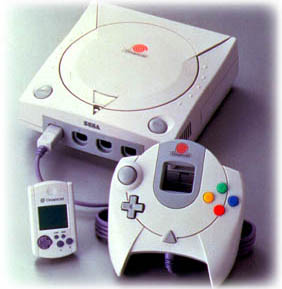 In 1998, Sega’s newest console, the “Sega Dreamcast”, was released in Japan and would come to the US on September 9, 1999. Packaged with a built in modem and support from Microsoft, the Sega Dreamcast was ahead of its time. Released before the Playstation 2, Xbox, and Gamecube, the console had brought in $132 million in sales, with a record breaking 225,132 units sold in the first 24 hours of launch. Launch titles “Soul Caliber”, “Hydro Thunder”, “Sonic Adventure”, and “Power Stone” led to launch success. The “Virtual Memory Unit” (VMU) peripheral served as more than just a memory card. It had the ability to play mini-games for various Dreamcast titles such as Sonic Adventure. When in the controller, it serves as an extra game display, showing vital stats in games like “Resident Evil 3”.
In 1998, Sega’s newest console, the “Sega Dreamcast”, was released in Japan and would come to the US on September 9, 1999. Packaged with a built in modem and support from Microsoft, the Sega Dreamcast was ahead of its time. Released before the Playstation 2, Xbox, and Gamecube, the console had brought in $132 million in sales, with a record breaking 225,132 units sold in the first 24 hours of launch. Launch titles “Soul Caliber”, “Hydro Thunder”, “Sonic Adventure”, and “Power Stone” led to launch success. The “Virtual Memory Unit” (VMU) peripheral served as more than just a memory card. It had the ability to play mini-games for various Dreamcast titles such as Sonic Adventure. When in the controller, it serves as an extra game display, showing vital stats in games like “Resident Evil 3”.
“Sega Net” was first introduced with the Sega Saturn as an online service that supported dial up. Though, because of the Saturn’s abrupt end, Sega Net now supported the Dreamcast. The service allowed for lower latency and was preferred over an internet service provider. By this time, Sonic Team member Naoto Oshima has left and Sonic Team USA is formed in California for the releases of” Chu Chu Rocket” and “Sonic Adventure 2”. Online games Chu Chu Rocket and “Phantasy Star Online” became hits and the most popular online supported games. The creation of Sega Sports also canceled out the need for EA sports titles. Yu Suzuki of Sega AM2 directs “Shenmue”, the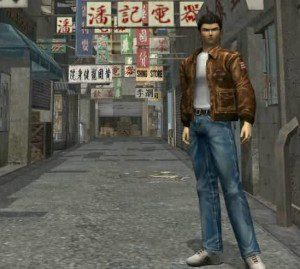 world’s first highly interactive adventure game. Intricate games play elements such as a day and night time system made Shenmue one of the most expensive video games ever made at $70 million.
world’s first highly interactive adventure game. Intricate games play elements such as a day and night time system made Shenmue one of the most expensive video games ever made at $70 million.
Unfortunately, Sega suffers once more, with the coming launch of Sony’s “Playstation 2”, sales for the Dreamcast quickly drop and by January 2001, Sega announced that it will discontinue support for the Dreamcast. Though, with games like “Shenmue 2” and “REZ”, the Dreamcast continued to sell until 2007 in Japan. This was the last console to be developed by Sega.
The Future
From 2001 to 2005, Sega struggled in its transition to being a software developer. Still producing arcade units under Sega NAOMI, the company suffered through 5 fiscal years of net losses. Thanks to a donation from CSK founder Isao Okawa, Sega was able to slowly get out of this debt. After a purchase of shares from CSK by Sammy Corporation, Hajime Satomi became CEO of Sega Corporation. It was decided from there on, that Sega would focus on its arcade profits rather than its home console failures. The release of “Sonic Heroes” in 2003 was the first multi-platform Sonic game, selling over one million copies in Europe and receiving mixed reviews in the US.
Games such as “Yakuza” and “Football Manager 2006” kept Sega afloat as a software developer and publisher. Profits constantly increased and decreased over the years but, it seems like the future is looking brighter. Newer game titles such as “Yakuza 3” and “Vanquish” continue to show promise as well as revisited franchise titles such as “Sonic the Hedgehog 4”. 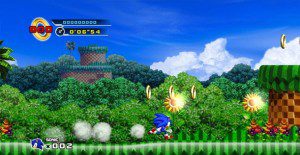
While Sega has seen its fair share of ups and downs, it is without a doubt that the company will continue to both innovate and move forward. While striving to outdo its competitors, it seems that now Sega has learned that being number one isn’t always most important. Throughout the years, Sega has not only grown in stability and popularity but also maturity. We look forward to Sega’s future because when it comes to this company, you never know what’s next.


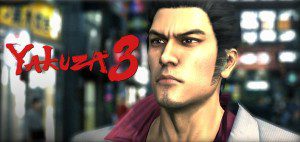
Very informative history of SEGA.